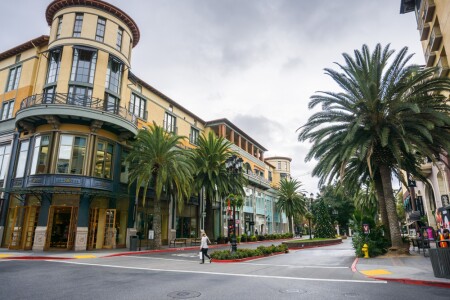There is perhaps no more famous saying in retail than “location is everything.” But is it? Based on ULI’s recently published report, Successful Retail: How 14 Shopping Centers Are Thriving Today, in a post-pandemic retail world, location is indeed an important driver of success—arguably the key driver—but it is not the be-all and end-all.
It is also important to define “location.” The study’s authors pointed out that location encompasses a whole range of qualities that go beyond just geographic coordinates. What kind of visibility and access the property has, the demographics of the area, and what competition exists, if any, in the area all play a role in what is meant by location.
ULI’s researchers delved into the common threads connecting the shopping centers finding success and what the industry can learn from them. Despite the wide range in size, age, and geographic location among the shopping centers studied, some key factors stood out to researchers during the case studies.
Going beyond location, more is better, the study concluded. Whether it’s more road traffic, more visibility, more shoppers living close by, and even more competition can help draw more customers to a shopping center. “All of these can raise the odds of success for a retail project on a particular site,” wrote the study’s authors.
However, even if a shopping center is in the most desirable location possible, it doesn’t guarantee success. Many retail centers built in premier locations have failed to find success–even when located close to centers that were already successful.
On the flip side, projects built in seemingly unproven locations have done very well, like Freedom Plaza in Los Angeles and Kierland Commons in Scottsdale, Arizona. In those cases, the demographics looked challenging but residential density nearby proved to be a key factor for the Los Angeles center, while in the case of Kierland Commons, the shopping center was the only center in a developing area where other developments soon followed, helping it become a key retail shopping area.
The Right Mix
The size of a shopping center doesn’t necessarily determine its success either. Three of the centers studied in the report–Glendale Marketplace in California; Shops at Boca Center in Florida; and Brentwood Place in St. Louis–are on the smaller side but are successful in garnering shopper traffic at least in part because of how close they are to much larger shopping malls. The malls are a shopping destination for the region, which has the effect of increasing the market draw even while increasing the number of competitors nearby.
Another important component of a successful retail center is the lineup of tenants. While it might seem relatively straightforward to aim for the most popular brand names and the trendiest concepts, taking a more thoughtful approach can make a big difference.
“Getting the right mix depends on understanding not only what shoppers will appreciate, but also what uses and retailers fit best with the location and the retail center’s vibe,” the report’s authors wrote. That might mean making sure to include local or regional retailers instead of focusing just on national tenants and making sure to align retail tenants with local demographics.
The all-important element of branding is part of what’s made the retail shopping centers profiled in the report successful, too. Among the centers in the report, several have distinct offerings in their markets that have endured over decades. Other, newer centers achieved rapid success by creating a unique brand for their center by focusing on certain kinds of retailers, like small, entrepreneurial brands, or by creating mini districts that combine historic buildings with new construction.
While there’s a lot that goes into what makes a successful shopping center, taking steps to keep that success going for the long term is a key factor that many interviewed for the report emphasized. One of the most important steps is how a developer of a retail center involves the community where the retail property is located, from how the center is designed, how it is built, and how it is operated. “We have a very, very long-term view,” one developer said in the report. “And we think we need to be part of the community–not someone that’s just coming in and making some money and exciting.”
On Knowledge Finder: Webinar Discussing Succesful Retail Report



![Western Plaza Improvements [1].jpg](https://cdn-ul.uli.org/dims4/default/15205ec/2147483647/strip/true/crop/1919x1078+0+0/resize/500x281!/quality/90/?url=https%3A%2F%2Fk2-prod-uli.s3.us-east-1.amazonaws.com%2Fbrightspot%2Fb4%2Ffa%2F5da7da1e442091ea01b5d8724354%2Fwestern-plaza-improvements-1.jpg)


